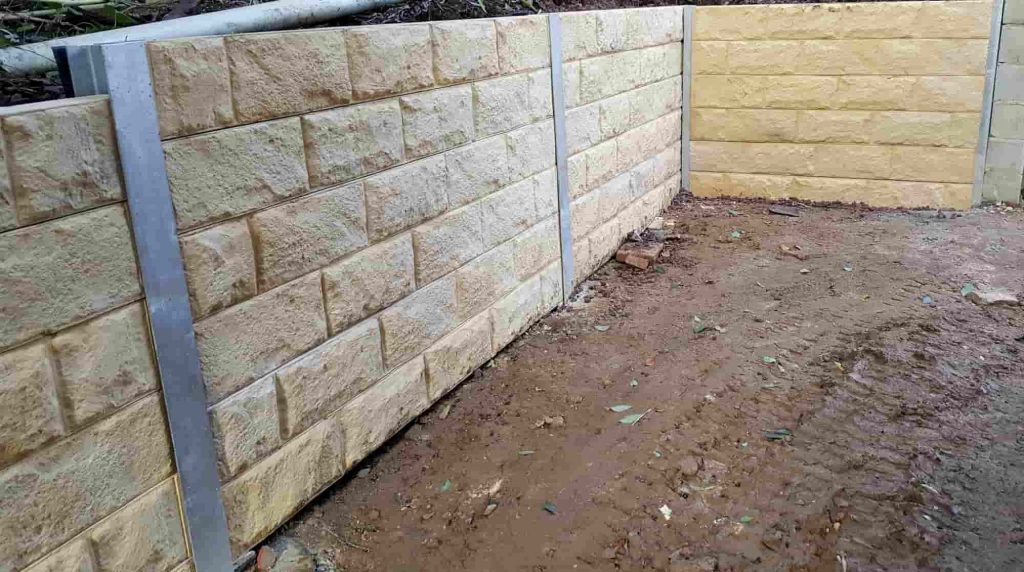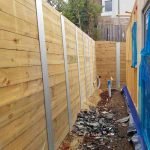Introduction
Building a maintaining wall is no little feat. Whether you're looking to fortify your yard, produce a sensational garden, or avoid soil erosion, the effectiveness of your retaining wall depend upon the quality of craftsmanship. So how https://andrecontractormwmc619.tearosediner.net/what-to-expect-from-a-retaining-wall-construction-team do you ensure quality work from your retaining walls company? You've pertained to the ideal place! In this detailed guide, we'll check out whatever you need to learn about guaranteeing superior results when employing a maintaining wall specialist. Get a cup of coffee and let's dive in!
How to Make sure Quality Work from Your Retaining Walls Company
When it pertains to building a maintaining wall, quality is essential. A durable wall not only improves your landscape but also prevents water damage and soil erosion.
What Makes an Excellent Retaining Wall?
An excellent retaining wall is more than simply a stack of concrete blocks or wood sleepers stacked together. It ought to be crafted with:
- Proper Drainage: This avoids water buildup that can result in pressure versus the wall. Quality Materials: From concrete sleepers to wood sleepers, the products utilized need to be resilient and ideal for your environment. Correct Height and Design: Depending on what you're trying to attain, the height and design have substantial influence on stability.
Choosing the Right Materials
Concrete Sleeper Walls
Concrete sleeper walls are strong and need very little upkeep. They resist rot and insects-- best for that long-lasting investment.
Timber Sleeper Walls
Timber sleeper walls provide a rustic charm. Nevertheless, they require routine upkeep due to susceptibility to rot and pests.
Wood Sleeper Walls
These walls can incorporate beautifully into natural landscapes but might not hold up as well under stress compared to their concrete counterparts.
Assessing Experience and Expertise in Retaining Wall Companies
Why Experience Matters
Hiring a knowledgeable business implies they have actually navigated various obstacles in time-- like understanding how various materials communicate with soil types and weather conditions.
Questions to Ask Potential Contractors
How many years have you been in business? Can you provide references from past clients? What types of keeping walls do you specialize in? Do you provide warranties?Checking Qualifications and Reviews
Licensing and Insurance coverage: A Must!
Before signing anything, guarantee that the business has valid licenses and insurance coverage. This secures both parties in case of incidents throughout construction.
The Power of Online Reviews
Check platforms like Google Reviews or Yelp for feedback about previous projects. Look for patterns in comments-- both favorable and negative.
Understanding Project Estimates
What Ought to Be Included in an Estimate?
A comprehensive estimate must cover:
- Material costs (concrete sleeper vs. timber) Labor costs Timeline for completion Any additional services (like landscaping after setup)
Red Flags in Estimates
Be careful if quotes are significantly lower than rivals; it might show cutting corners.
Communication Is Key with Your Retaining Wall Company
Setting Expectations Early On
From day one, make certain both celebrations understand what's expected regarding timelines, design preferences, budget plan restrictions, etc.
Regular Updates Are Essential!
Regular check-ins keep everyone informed about development-- and reveal that the specialist values transparency.

Design Factors to consider for Your Retaining Wall Project
Functionality vs.Aesthetics
Consider whether your primary objective is functionality (e.g., preventing erosion) or visual appeal (e.g., beautifying your garden).
Design Designs to Explore
- Straight lines for modern-day looks. Curved styles for softer appearances.
The Importance of Drain Systems
How Drainage Affects Longevity
A proper drainage system avoids water accumulation behind the wall-- a leading reason for failure.
Types of Drainage Solutions
Weep holes French drains Gravel backfillPost-Construction Care Tips
Once that stunning retaining wall is built, how do you maintain it? Here are some suggestions:
1. Routine Inspections
Check for any signs of wear or damage at least twice a year.
2. Cleaning
Keep debris away from drain locations; it's essential for longevity!
Frequently Asked Questions (Frequently asked questions)
1. What type of keeping wall lasts longest?
Concrete sleeper walls generally last longer than timber or wood due to their resistance versus rot and structural integrity.
2. How high can I construct my maintaining wall?
This depends on local regulations; typically, retaining walls over 4 feet high may need engineering plans.
3. Do I require permits for developing a maintaining wall?
Most towns need permits; always examine regional standards before beginning construction!

4. Can I build my own retaining wall?
While do it yourself might conserve money upfront, working with professionals guarantees security and longevity.
5. What's better: concrete sleeper or wood sleeper?
Concrete offers longevity with less upkeep while wood has aesthetic appeal however needs continuous care.
6. How quickly can I plant near my brand-new keeping wall?
It's best to wait until any settling happens-- usually around six months-- before planting close by!
Conclusion
Building a strong structure with your picked retaining walls company sets the stage for success; preserving clear communication assists prevent pitfalls down the line! From picking appropriate materials such as concrete sleepers or timber sleepers to comprehending drainage systems' value-- this guide has actually covered all bases on guaranteeing quality work from your contractor while still giving space for imagination! So roll up those sleeves; it's time to get started on that dream project!